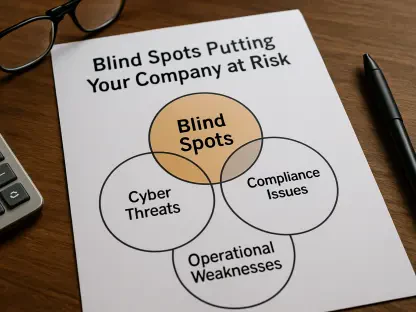Listen to the Article
The fast evolution of AI has created a catch-22 for cybersecurity teams in 2025. On the one hand, AI-powered tools help defenders to predict potential threats and accelerate their responses, while simultaneously allowing them to continuously learn and refine their protection strategies. On the other hand, bad actors are using the very same technology to scale, automate, and disguise attacks in ways that weren’t possible before.
This tension has created a defining paradox – the same technology that promises progress is also rewriting the rules of risk.
So, is there a way to gain an edge? Or will it remain a high-stakes stalemate in the foreseeable future? The truth is, it’s no longer about who has better technology, but who learns faster.
How AI Supercharges Attack Techniques
Marketing teams today rely on AI to sift through a customer’s digital footprint to deliver highly personalized messaging. Similarly, hackers use the technology to craft deceptive phishing campaigns so convincing that even trained cybersecurity personnel might struggle to spot malicious intent.
Zscaler recently found that global phishing incidents have dropped by 20%, but this speaks to a shift in tactics rather than a decrease in risk. The real reason behind the decline? Attackers are now honing in on specific business functions rather than developing broader campaigns – a strategy that’s resulted in higher-quality, more accurate breach attempts.
This shift shows how AI’s accessibility blurs the line between developer tools and attack vectors. This growth exposes the concerning reality that some areas of the business world are struggling to keep pace with the ever-evolving threat landscape.
Phishing doesn’t only threaten the sanctity of your emails. Websites now look realer than ever, too. With the generative AI tool v0 by Vercel, hackers can create near-perfect replicas of Okta login pages, banking portals, and HR systems in less than a minute.
For developers, v0.dev is groundbreaking. For attackers, it’s gold; a fast, frictionless way to steal credentials and infiltrate systems.
The numbers don’t lie, either. Kaspersky, the leading global security vendor, reportedly blocked more than 142 million clicks on malicious links in just three months. The worrying part? These attempts were not generic spam – they were tailored emails and messages that used publicly available information like LinkedIn profiles, corporate websites, and even personal bios to make each attack look and feel legitimate.
Deepfake technology and adaptive malware are equally dangerous. Traditional malware is predictable – and therefore easier to block. Its shapeshifting counterpart isn’t. It learns, morphs, and evades detection. It’s like malware with survival instincts. Deepfakes have also become common tools in the social engineering landscape. With voice cloning and hyperrealistic video graphics, hackers can easily impersonate influential figures and sway public opinion by using an executive’s likeness to spread narratives that work in the attacker’s favor.
What does this teach those who want to be on the right side of history? Discernment is a strong counter to deepfakes – fake videos often self-sabotage because of small nuances like odd behavior, jumps, skips, and glitches, as well as unusual formatting. AI-generated code also gets exposed if you use smart detection tools that understand what ‘normal’ should look like. Lastly, automation, an extensive threat intelligence network, and rapid responses are critical to stopping AI-driven threats.
The full extent of AI-driven threats doesn’t stop at phishing, malware, and deepfake deception. In 2025, AI also powers:
Reconnaissance and vulnerability discovery.
Supply chain and infrastructure exploits.
Autonomous, multi-stage attacks.
Synthetic identity and KYC fraud.
Advanced data exfiltration techniques.
DDoS and botnet orchestration.
AI has fallen into the wrong hands, and businesses must adapt to a smarter, faster, more sophisticated threat landscape. But it’s not all doom and gloom. The good news is that the same capabilities can reinforce defenses across enterprise, government, and individual systems.
Defenders Are Fighting Fire with Fire
Security teams are not standing still. After years of attack techniques outpacing cybersecurity measures, AI has levelled the playing field. To strike back, security teams are deploying AI/ML models at scale to monitor huge volumes of data, spot anomalies, and accurately predict where the next attack might come from.
With large-scale threat detection capabilities, AI can process billions of network events per second – identifying strange or anomalous activity faster than any human analyst could.
Here are some research findings that further illustrate how AI and machine learning:
Accelerate threat detection by 60% and reduce false positives by 85%.
Detect and prevent zero-day vulnerabilities before escalation.
Empower companies to achieve up to $150 billion in annual savings.
Will transform the future of cybersecurity into real-time, machine-versus-machine warfare.
Doubling down on AI’s power, organizations are leveraging AI-driven Zero Trust approaches to inspect encrypted traffic, isolate suspicious browser sessions, and apply adaptive risk scores in real time. Netcraft, a leading digital risk protection platform, has also uncovered new attack vectors, where adversaries develop fraudulent domains that rank in search results or AI responses before the brand’s legitimate site, giving attackers first contact with unsuspecting users. Even LLMs are falling for this, presenting a real danger. On the bright side, Netcraft’s discovery of these new attack methods is the first step in the pursuit of stronger, more intelligent safeguards.
The future of AI-powered defenses is bright. PhishLumos is a multi-agent system that uses LLMs to identify and disrupt phishing infrastructure, helping companies stay ahead of attacks before they go live. Then, there is AegisShield, an all-in-one cybersecurity platform, which helps smaller businesses model threats using well-known frameworks like MITRE ATT&CK.
The Balance of Power
Every stride in security innovation inspires a new way to get around it. And with each new AI-driven attack technique, cybersecurity experts have the opportunity to plug a previously undiscovered protection gap. But this requires a careful approach to wielding AI as a defense mechanism. It should augment human expertise, not replace it. On top of that, teams must ensure they are prepared to fend off adversarial AI, spot manipulated content, and strengthen identity protection with advanced controls.
Human + AI Collaboration
Security innovation inspires new ways to get around it. That’s why human judgment remains cybersecurity’s ultimate differentiator.
AI can monitor billions of network events per second, detect anomalies, and predict zero-day vulnerabilities – but it still lacks intuition. It can’t question intent, context, or motive – the things human defenders do instinctively.
Security teams are already combining machine precision with human discernment. AI-driven Zero Trust models can inspect encrypted traffic, isolate browser sessions, and assign adaptive risk scores in real time. Meanwhile, analysts interpret patterns and make decisions that require creativity and experience.
Tools like PhishLumos, which uses large language models to disrupt phishing infrastructure before it launches, and AegisShield, which helps small businesses simulate threats, show how collaboration between human and machine can change the game.
The goal isn’t to replace human intelligence – it’s to amplify it.
In Conclusion
By now, it’s clear that AI is the defining technology of 2025, especially in cybersecurity, where the same algorithms that protect networks are used to exploit them.
Who will win this race? The organizations that move from reaction to anticipation. The ones that blend speed, strategy, and human insight.
In essence, AI may be a double-edged sword, but when wielded with understanding, it becomes a force multiplier for resilience.
In this race to adapt, the edge doesn’t belong to those with the most data – it belongs to those who can make meaning out of it fastest.









